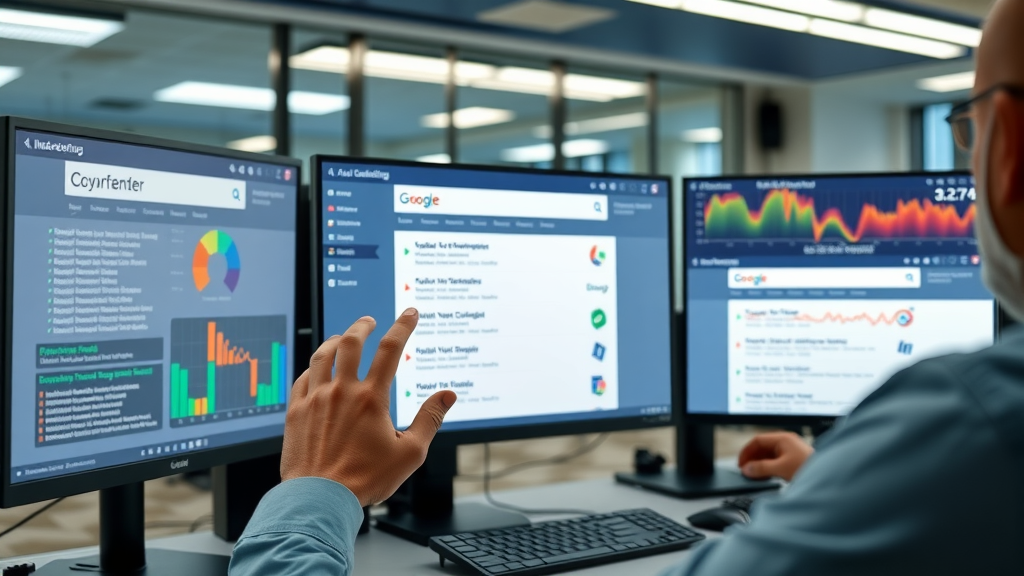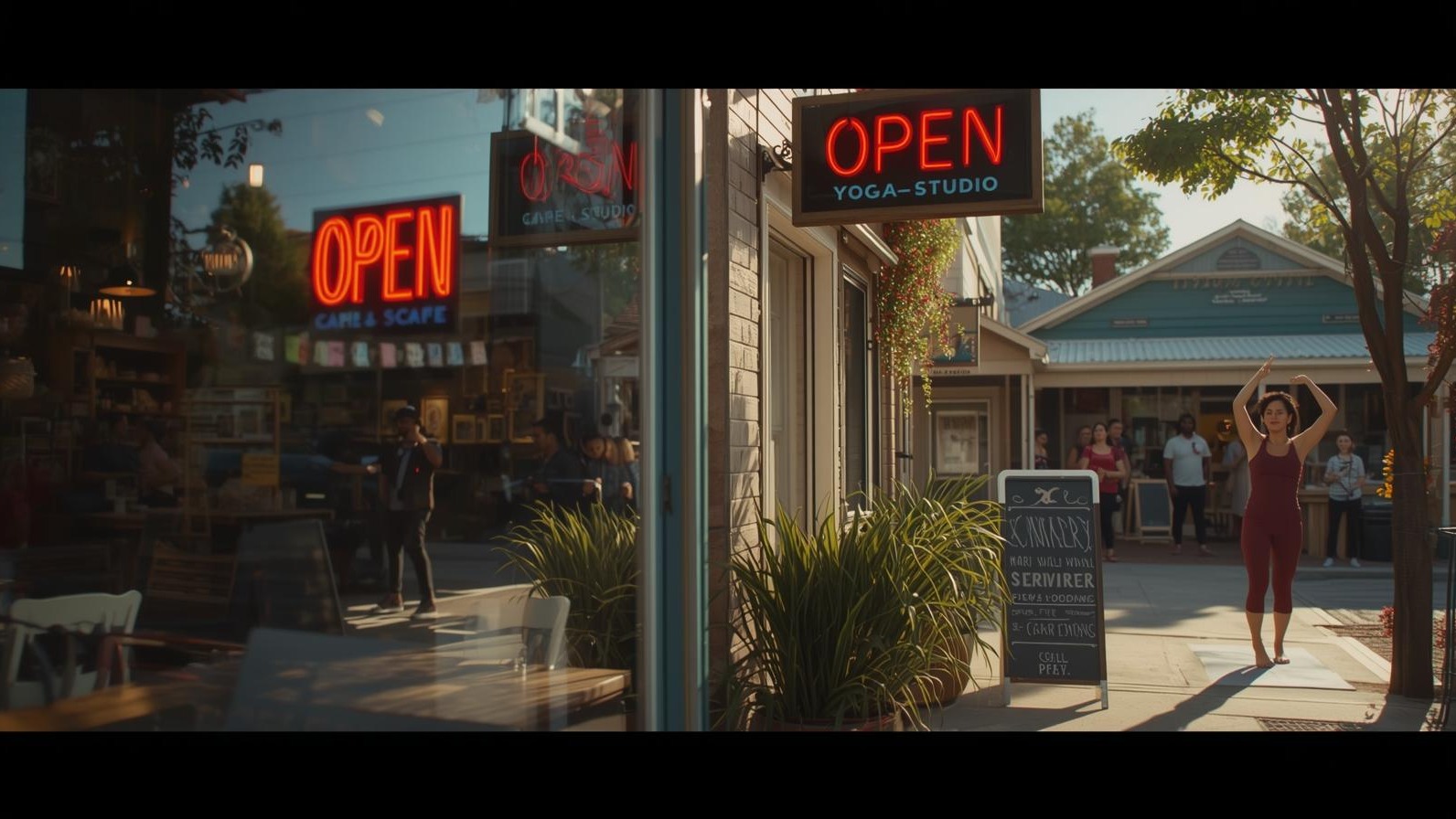Are You Struggling to Get Customers on a Small Business Advertising Budget?
Are you finding it tough to attract new customers while working with a limited small business marketing budget? This is a common challenge that many small business owners face today. With fierce competition from big players who have deep pockets, small businesses often feel overshadowed when trying to get noticed online. However, there's good news: savvy strategies exist that can help you maximize every marketing dollar and drive meaningful customer traffic—even on a shoestring budget.
Imagine the power of being suggested right when a potential customer is searching for your service or product. Instead of hoping that ads or posts catch their eye by chance, what if your business could appear as a trusted recommendation in search results? Diane O'Brien, a seasoned marketer from Digital Marketing All, explains how smaller companies can harness cutting-edge advertising techniques that don't require massive spend yet deliver results that can compete with larger brands.
Key Takeaways: Effective Small Business Advertising Budget Tips
Prioritize search engine visibility with exclusive keyword autocomplete advertising to capture high-intent traffic.
Leverage multiple marketing channels strategically based on your unique business goals and customer behaviors.
Optimize marketing spend by focusing on highly relevant keywords and geographic locations to maximize impact.
Use pay-per-click models with capped monthly budgets to control costs and prevent overspending.
Regularly review and adjust your marketing strategy based on analytics and real performance data to stay ahead.

Overview of Small Business Advertising Budget Challenges
Common Obstacles in Marketing Spend for Small Businesses
Small businesses often face significant challenges when managing their marketing budgets and optimizing marketing spend across multiple digital marketing channels. The most frequent issues are limited funds, high competition, and fragmented marketing avenues. Small business owners feel the pressure to be present across multiple marketing channels—Google, Facebook, LinkedIn, YouTube, TikTok—but quickly realize that limited marketing budgets and time don't stretch that far.
Diane O'Brien from Digital Marketing All highlights, "Most small businesses want to reach as many customers as possible but only have a tiny budget. They can't afford to waste money on expensive ads that don’t guarantee clicks or conversions. The key lies in aligning your marketing strategy and marketing campaign with where customers are actively searching, maximizing marketing spend by targeting high-intent keywords."
This budget challenge is compounded by the escalating cost-per-click (CPC) on platforms like Google Ads. Some keywords can cost anywhere from $6 to over $200 per click, depending on the industry and location. For a plumber, that’s a significant monthly expense that many small business owners cannot sustain. Thus, understanding where to spend wisely and how to gain maximum visibility without burning cash is crucial for sustained growth.
For small businesses struggling with traditional marketing efforts like cold calling and email marketing, exploring alternative digital marketing and lead generation strategies can significantly improve customer acquisition. If you're finding that cold calling and cold emails aren't delivering results, consider reviewing what to do instead when cold outreach isn't working to discover more effective ways to connect with potential customers.

Comparing Marketing Channels: Where Should Small Businesses Invest Their Marketing Budget?
Google Ads: High Cost but High Intent Traffic
Google Ads remains a powerful digital advertising platform for small businesses, offering a high return on investment by capturing users with strong purchase intent. When someone searches "plumber near me," they are actively looking to hire a plumber now, making the search traffic highly valuable. However, as Diane explains, "The problem is the cost. Small businesses can quickly exhaust their budgets, especially on competitive keywords where clicks can cost up to $200." The limited budget often means being outbid by larger competitors, leading to less visibility despite high spending.
Moreover, Google’s auction-style system continually raises prices if competitors bid higher, increasing marketing spend and challenging small businesses to maintain an effective marketing budget. Additionally, the visibility from paid ads is fleeting—once the budget runs out, so does the ad’s presence, leaving the business invisible in crucial moments.
Social Media Advertising: Branding vs. Immediate Customer Acquisition
Social media platforms like Facebook, TikTok, and Instagram are essential marketing channels for small businesses, excelling at branding and supporting effective marketing campaigns that enhance customer acquisition. Diane notes, "People scroll through Facebook and TikTok primarily for entertainment. If they stumble upon a product or special offer and decide to buy on the spot, that’s a win. But for service businesses like plumbers, CPAs, or financial advisors, it’s not the most effective channel for immediate customer acquisition."
Social media ads are great for building brand awareness and engaging prospective customers over time, but for immediate customer acquisition, small businesses should balance social media with search-focused marketing campaigns. For many small businesses needing reliable lead flow, Facebook and similar platforms should be a component of a broader strategy rather than the sole focus, especially when budgets are tight.

LinkedIn and YouTube: Niche Opportunities for B2B and Video Marketing
LinkedIn serves as a niche platform mainly for B2B services and professional networking. For businesses targeting other businesses—like CPAs or consultants—LinkedIn ads can be effective in reaching decision-makers. Diane explains, "If you serve businesses, LinkedIn is a natural fit for advertising because it connects you to a professional audience actively seeking services."
YouTube, owned by Google, functions both as a video platform and a significant search engine. Surprisingly, even niche sectors like life insurance are finding success running YouTube ads because users frequently search educational or informative content there. Yet, this success often depends on having an established channel and the ability to produce engaging videos. For small businesses with very limited budgets, YouTube ads may be more costly compared to alternatives.

Expert Insights: Diane O'Brien on Maximizing Small Business Advertising Budgets
"The only way to get customers is to get people when they are searching for what you have to offer that you come up first." — Diane O'Brien, Digital Marketing All
Diane O'Brien shares a fundamental truth of digital marketing for small businesses: prioritizing search engine visibility in your marketing strategy and focusing on effective marketing campaigns targeting customer acquisition delivers the best return on investment. Instead of spreading marketing budgets thinly across social media channels or paid ads where interest may be lower, a focused marketing strategy targeting search engine visibility can deliver better return on investment.
Innovative Strategy: Exclusive Keyword Autocomplete Advertising on Google and Bing
How Exclusive Keyword Placement Works
Digital Marketing All offers a unique advertising approach that targets the autocomplete suggestions on search engines like Google and Bing. When someone begins typing a keyword such as "plumber near me," their autocomplete dropdown starts suggesting phrases. Imagine your business name paired with relevant offers appearing there before the search is even completed.
Diane explains, "We put your business right next to the autocomplete suggestions so it feels like a natural recommendation from Google or Bing. The user sees your company name and clickable offers alongside their search, increasing the chance they pick you first."
This method is exclusive—only one business per keyword per location can claim the slot, creating a monopoly for highly targeted search terms. Small businesses benefit by appearing above competitors without a massive ad spend.

Benefits of Autocomplete Advertising for Small Businesses
100% of search traffic on targeted keywords directs attention exclusively to your business.
Dual presence on Google and Bing, capturing a wider audience as many users default to Bing or Edge browsers unknowingly.
Pay only for actual clicks with a capped monthly budget, ensuring cost control and transparency.
Increased credibility because comprehensive business listings—including reviews, posts, website, and directories—show up on the first page.
No long-term contracts, offering monthly flexibility to adjust budgets based on your needs.
Optimizing Marketing Budgets with Data-Driven Keyword Selection
Successful campaigns depend on precise keyword and location targeting. Diane's team reviews search volume data, seasonal trends, and business specifics to select five or more relevant keywords per location. For example, a roofer might target "roofing near me," "storm damage repair," and "emergency roof service" to capture different customer intents.
Adjusting keywords or adding new locations can help small businesses optimize their marketing spend and maintain a steady stream of clicks—maximizing their marketing budget impact during fluctuating search volumes. Reports from Google Analytics and Bing Webmaster tools track the exact performance, so business owners see where their money is going and the results generated.

Addressing Common Questions About Small Business Advertising Budgets
What is a Good Advertising Budget for a Small Business?
Small business advertising budgets vary widely based on business size, marketing goals, and customer acquisition targets, making it essential to align your marketing spend with clear business goals and an effective marketing strategy. Diane notes that some small businesses start with as little as $500 per month, which can fund a focused autocomplete campaign generating valuable clicks. The key to optimizing your marketing budget is flexibility and focusing on marketing campaigns that maximize return on investment by paying only for actual results rather than unguaranteed impressions.
What is the 70 20 10 Rule for Marketing Budget?
The 70 20 10 rule for marketing budget suggests allocating 70% of marketing spend to proven marketing campaigns, 20% to emerging marketing strategies, and 10% to experimental content marketing or digital advertising to optimize marketing budgets. For small businesses, this could mean dedicating most dollars to keyword autocomplete and search-based campaigns, a smaller portion to social media branding, and a little to new platforms or content marketing.
What is the SBA Recommended Marketing Budget?
The Small Business Administration recommends that small businesses allocate 7-8% of gross revenue to marketing if they earn less than $5 million annually and have net profits of 10% or more. However, given that every business is different, prioritizing cost-effective and measurable channels such as autocomplete advertising can help stretch these dollars further.
How to Calculate an Advertising Budget?
Start by defining your business goals—such as number of customers or revenue targets—and then determine your cost per acquisition from past marketing campaigns or industry benchmarks to optimize your marketing budget. Using the $2.50 average cost per click from autocomplete advertising as an example, a small business wanting 400 clicks would budget around $1,000 per location per month. Always factor in testing and optimization time.

Next Steps: Empowering Your Small Business Advertising
If you want to stop competing against big-budget companies and optimize your marketing budget by paying only for real results, consider exclusive autocomplete advertising—a digital advertising strategy that puts your small business front and center on Google and Bing.
"Our goal is to help small businesses get front and center with every customer, without breaking the bank." — Diane O'Brien, Digital Marketing All
Ready to take control of your advertising budget and attract customers who are actively searching for your services through effective digital marketing and targeted marketing campaigns? Call us at 207-710-1449 or visit our website at www.digitalmarketingall.org to schedule a free consultation. Let's grow your business the smart way—with strategies designed for small budgets and big results.
I hope you enjoyed reading our blog. If you would like assistance with your marketing, give us a call at 207-710-1449 or visit our website at www.digitalmarketingall.org.
As you continue to refine your marketing approach and stretch every advertising dollar, it's worth exploring broader strategies that can fuel your business growth in the long run. For a comprehensive look at proven marketing tips, content marketing, and advanced marketing strategies tailored for small businesses, check out these expert marketing tips and strategies to grow your business. By combining tactical advertising with a holistic marketing plan, you'll be better equipped to adapt, innovate, and achieve sustainable results in a competitive landscape. Take the next step and unlock new opportunities for your business today.
 Add Row
Add Row  Add
Add 








Write A Comment